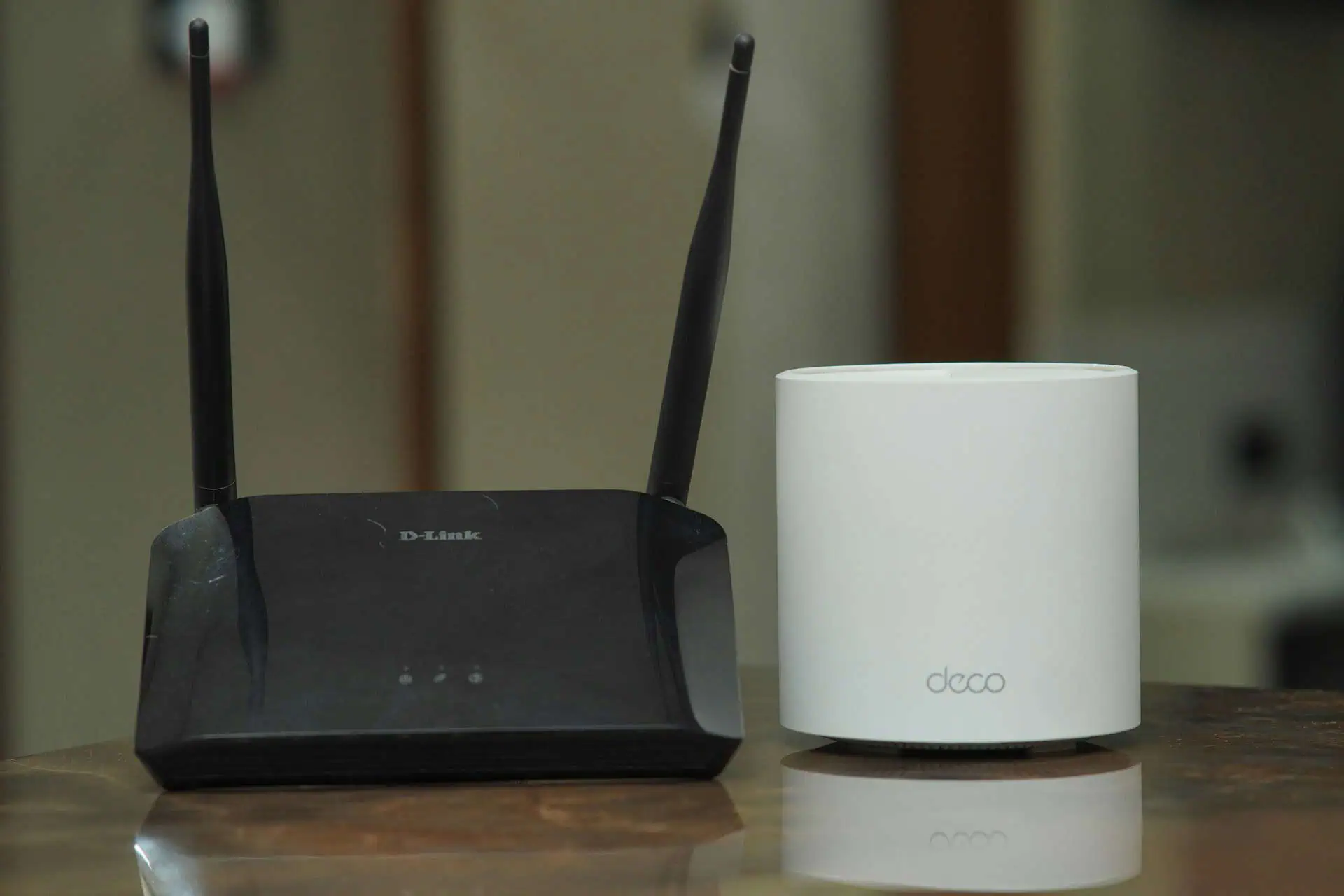The internet is an intricate and expansive network that has revolutionized the way we communicate, learn, and conduct business. It is a global system of interconnected computer networks that use the Internet protocol suite (TCP/IP) to link devices worldwide.
Understanding how the internet works is essential for appreciating its capabilities and navigating its complexities.
Let’s explore the fundamental technologies that make the internet function, the various types of internet connections, and the impact it has on our daily lives, as well as future trends that are shaping its evolution.
Key Takeaways
- The internet operates on a client-server model, using IP addresses for identification and ISPs to connect users to the network.
- Data is transferred via packet switching using protocols like TCP/IP, ensuring efficient and reliable communication across devices.
- The internet’s growth continues with advancements like Internet Protocol Version 6 (IPv6) and the integration of the Internet of Things (IoT), expanding connectivity to an unprecedented scale.
Understanding the Fundamentals of Internet Technology
The Client-Server Model and IP Addresses
We often take for granted the seamless way in which we access information on the internet, but it’s the underlying client-server model that makes this possible. In this model, our devices act as clients that request data from servers, which are powerful computers dedicated to storing and serving that data. Each client and server is identified by a unique IP address, ensuring that information is sent to the correct location.
When we browse the web, our requests are broken down into packets. These packets are like envelopes containing our data, each labeled with the IP address of the destination server. Our router plays a crucial role in this process; it examines the destination address on each packet and directs it through the vast network of the internet. Here’s a simplified list of steps that occur during this process:
- Our device sends a request to access a website.
- The request is broken down into packets, each with the server’s IP address.
- The packets travel through the internet, hopping from router to router.
- The server receives the packets, processes the request, and sends back the requested data.
- The data travels back to our device, where it’s reassembled into the information we see on our screen.
It’s important to note that while local IP addresses within our network might start with 192.168, the IP address assigned by our ISP is different and unique to our internet connection. This distinction is crucial for distinguishing our specific internet traffic in the broader web.
Related: What is Fiber Internet? How It Works
Packet Switching and Data Transfer Protocols
We’ve come to understand that the internet is a complex web of connections, and at the heart of these connections lies the ingenious method of packet switching. This technique involves breaking down data into small, manageable packets that are sent through various network paths to their destination. Each packet travels independently, which optimizes the use of available bandwidth and reduces the likelihood of a single point of failure.
When discussing data transfer protocols, it’s important to consider the rules and conventions that govern the exchange of these packets. Protocols like TCP/IP ensure that packets are sent, received, and assembled correctly, allowing us to browse the web, send emails, and stream videos seamlessly.
As we delve into the specifics, we’ll explore the benefits of fiber optic internet, which offers high-speed data transmission, and the distinctions between modems and routers, which are crucial for establishing a stable connection.
Understanding these protocols and switching techniques not only enhances our appreciation of the internet’s functionality but also empowers us to troubleshoot common issues and make informed decisions about our connectivity options.
Don’t miss out on our latest offers and expert insights – visit us now and take the first step towards an unmatched online experience.
The Role of Internet Service Providers (ISPs)
Let’s explore the pivotal role of Internet Service Providers (ISPs). ISPs are the backbone of our online connectivity, acting as the bridge that links our devices to the vast digital world. They operate the essential infrastructure, such as cables and routers, that make our internet access possible.
ISPs not only provide us with the necessary hardware but also assign unique IP addresses to our devices. This ensures that our online communications are directed correctly across the global network. The services offered by ISPs are crucial for both individuals and businesses, as they enable us to access, engage with, and contribute to the internet.
The functions of ISPs can be summarized as follows:
- Providing internet connectivity and infrastructure
- Assigning IP addresses for device identification
- Enabling data transmission using TCP/IP protocols
Without ISPs, our ability to connect and interact on the internet would be severely hindered. They are the unsung heroes that maintain the flow of digital information, allowing us to enjoy the benefits of a globally connected world.
Related: Best High-Speed Internet Providers in Canada
How VMedia Enhances Internet Connectivity
At VMedia, we are dedicated to ensuring that your connection to the digital world is seamless and hassle-free. Our high-speed internet plans are customized to accommodate your needs, whether you are a casual web surfer or a demanding power user.
With reliable, unlimited data and high-speed options across various regions in Canada, we provide connectivity solutions that allow you to explore, communicate, and enjoy digital content without constraints. Click here to compare plans.

Exploring the Types and Uses of the Internet
Different Internet Connection Technologies
Types of Internet connections vary in speed, efficiency, and technology, providing us with multiple options to access the digital world.
One of the earliest methods, the dial-up connection, is known for its characteristic modem tones. Although it’s largely obsolete, it laid the groundwork for more advanced technologies like DSL and ISDN. DSL offers a significant speed boost over dial-up, while ISDN provides versatility by connecting multiple devices and supporting data transfer for audio and video.
The evolution continued with the introduction of cable modems, which utilize television cable networks for internet access, and broadband, recognized for its high-speed capabilities.
In the realm of wireless, WiFi has become the most prevalent, connecting a myriad of devices through radio frequencies. Each connection type comes with its own set of pros and cons, from the near-universal availability of satellites to the fastest speeds and lowest latency offered by fiber optics.
Here’s a quick overview of the connection types and their attributes:
- Satellite: Universal availability but higher costs and latency.
- 4G Home Internet: Widely available with lower costs but slower speeds.
- Mobile Hotspot: Offers portability but generally slower and more expensive.
- Fixed Wireless: Moderate costs and latency with varying speeds.
- 5G: Promises high speeds and low latency but has limited availability.
- Fiber: Delivers the fastest speeds and lowest latency, though availability can be an issue.
Related: 4G vs 5G: What’s the Difference?
The Internet’s Impact on Communication and Commerce
We’ve witnessed a transformation in how we communicate and conduct business, thanks to the pervasive influence of the internet. The rise of email, instant messaging, and social media has revolutionized our ability to connect with others, breaking down geographical barriers and fostering global interactions.
The internet has also catalyzed a seismic shift in commerce. The advent of online shopping and e-commerce platforms has not only expanded consumer choice but has also introduced a new level of convenience and efficiency in transactions. Here are some key ways the internet has reshaped the commercial landscape:
- It has enabled the emergence of virtual marketplaces where buyers and sellers can transact without the need for physical presence.
- Small businesses and entrepreneurs have gained access to a global audience, leveling the playing field with larger corporations.
- The internet has facilitated the collection and analysis of consumer data, allowing for more targeted marketing and personalized shopping experiences.
As we continue to embrace digital technologies, the internet remains a driving force in shaping our communication patterns and commercial activities, promising even more innovative changes in the years to come.
How Does VMedia Fit Into The Internet
Understanding the diversity of internet service providers is crucial when exploring how the internet works. At VMedia, we offer a variety of high-speed internet plans tailored to meet speed, budget and connectivity needs. Whether you’re looking for unlimited surfing or high-bandwidth options for streaming and gaming, VMedia has you covered.
Explore our offer page to view the latest deals and compare plans to find the one that best suits your internet requirements.
By offering flexible options and detailed plan comparisons, VMedia helps demystify internet services, making it easier for consumers to make informed choices.
Future Trends: Internet Protocol Version 6 and IoT
As we look towards the future, we see two significant trends that will shape the internet: Internet Protocol Version 6 (IPv6) and the Internet of Things (IoT). IPv6 is crucial because it provides a much larger address space than its predecessor, IPv4, which is essential as more devices come online. With IPv6, we can expect:
- A continued increase in the number of interconnected devices
- Enhanced security features built into the protocol
- Improved efficiency in data routing and handling
The IoT, on the other hand, represents a transformative shift in how we interact with the world around us. Devices of all kinds, from home appliances to industrial equipment, are being equipped with unique identifiers and the ability to communicate over the internet.
This connectivity leads to smarter cities, more efficient industries, and personalized user experiences. As the adoption of Internet technology grows, so too does the potential for innovation and the creation of new services that were previously unimaginable.
The Internet is a vast network that has become an integral part of our daily lives, offering a myriad of services and opportunities for communication, entertainment, and education.
Whether you’re looking for high-speed connectivity for seamless streaming or a reliable connection for your home office, understanding the different types of internet services is crucial. Dive into the world of internet possibilities on our website, where you can compare plans, explore pricing, and find the perfect fit for your online needs.

Preparing for Future Trends with VMedia
VMedia stays ahead of the curve by offering services equipped for future trends. As more devices connect to the internet and data demands increase, our infrastructure is ready to handle this scale.
Our internet plans empower you to harness seamless device interconnectivity with minimal latency. Choose VMedia to stay at the forefront of internet innovation and enjoy an online experience that’s optimized for tomorrow’s internet technology today.
Click here to get started today.
Conclusion
The internet is an intricate yet fundamentally straightforward network that revolutionizes how we communicate, learn, and conduct business. From its humble beginnings to the complex system of clients, servers, and protocols we see today, the internet has become an essential part of modern life.
It operates on the principles of packet switching and relies on the TCP/IP protocols to ensure data is transmitted and received accurately. With its continuous evolution, such as the advent of IPv6 and the IoT, the internet’s potential for growth and innovation seems limitless. Understanding how the internet works is crucial for appreciating its capabilities and navigating its vast resources effectively.
As we continue to rely on this technology for a myriad of activities, it’s clear that the internet will remain a cornerstone of global connectivity and information exchange for years to come.

